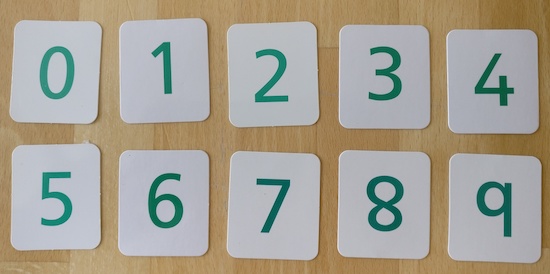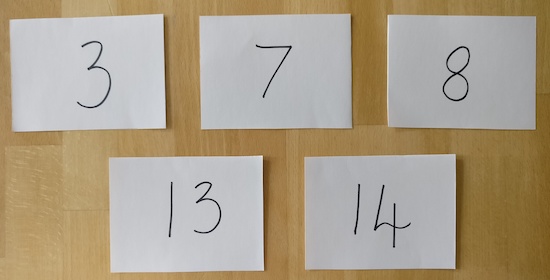Copyright © University of Cambridge. All rights reserved.
'Sealed Solution' printed from https://nrich.maths.org/
Show menu
Why do this problem?
Sealed Solution offers the chance for children to work in a systematic way and is a great context in which to encourage them to explain and justify their reasoning.
Possible approach
Begin by familiarising children with the context: Using digit cards 0 to 5, invite the class to watch as you put 0 and 1 in one envelope and write their total on the outside (or on a 'post-it' note stuck to the envelope). Put 3 and 5 in another envelope, again writing their total on the envelope. Explain that the other two cards will go in the last envelope. What will the total be? How do they know?
Try this again, this time putting 0 and 5 in one envelope and recording the total. But then put two cards in another envelope without showing them to the children. Write the total on the outside of the envelope. Repeat this for the third envelope. (For example you could have 1 and 3 in the first and 2 and 4 in the second.) What numbers are in the two envelopes? How do they know?
Try again, this time keeping 0 and 5 in the first envelope but suggest that you want to put the other cards in pairs into the envelopes, so that the totals on the other two are the same. What could you do? How do they know? At each stage, children can be working in pairs, perhaps using mini-whiteboards and digit cards to try out their ideas.
Key questions
Which envelope shall we try first? Why?
What could be in this envelope?
Are there any numbers which you know definitely aren't in this envelope? Why?
Are there any other solutions?
Possible support
Having digit cards available for children to use will free up their thinking and will make it easier to try out different ideas without worrying about crossing ideas out on paper.
Possible extension
Children could make up their own problem along these lines.
Alan Parr, the creator of this task, wrote to tell us:
'I've recently returned to this for the first time in ages, working with some Year 6s [10 and 11 year olds]. They found it so accessible and involving that we took it to places I'd never previously dreamt of.' You can read what they did in the first April 2015 post on Alan's blog, and he writes about the task again in
two March 2017 posts.

